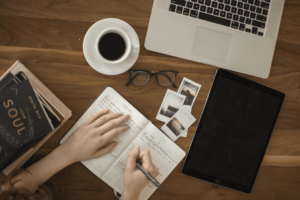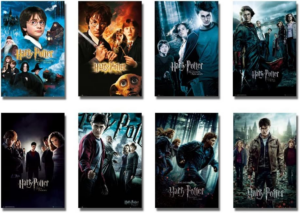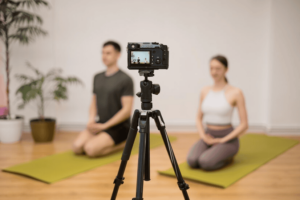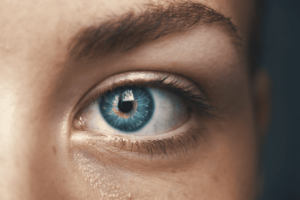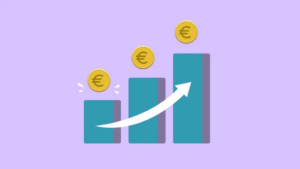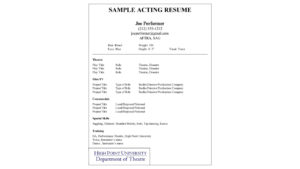A medium wide shot, MWS, or MLS is a type of camera shot that shows a location and the character or characters filmed there. Characters in a medium wide shot are filmed from their head to around their knees. Medium wide shots are wide enough to show a scene’s setting while still narrow enough to show characters’ facial expressions and other details. They strike a balance between a full shot and a medium shot.
Medium wide shots go by several other names, including:
- Medium long shots
- Three-quarter shots, as they show roughly three-quarters of a character’s body
- American shots
- Cowboy shots, as they were common in westerns when filmmakers captured cowboys’ faces and the holsters of their guns
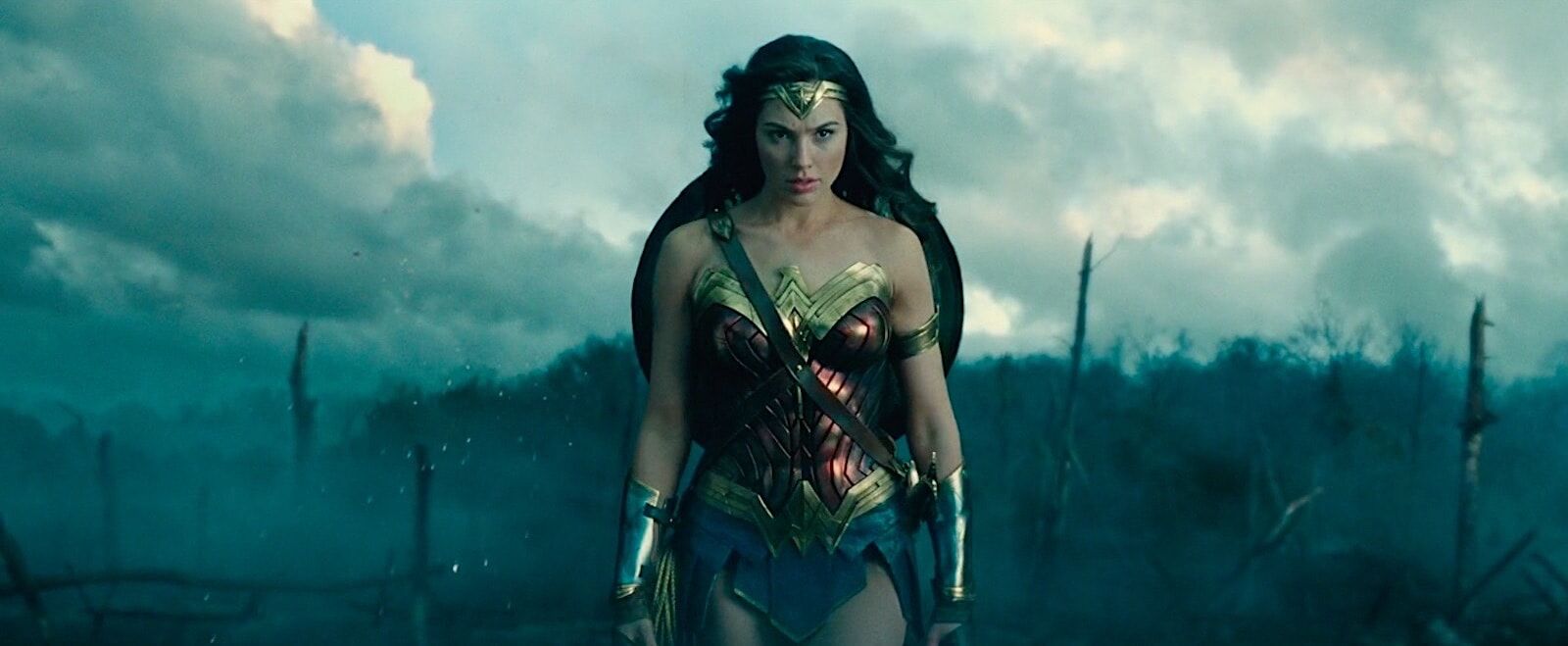
Scene from “Wonder Woman“
The creators of various video presentations, including films, television programs, and animations, can all use medium wide shots. They are generally static shots where the camera doesn’t move. However, filmmakers can combine medium wide shots with dynamic shot techniques. For example, a medium wide shot combined with a dolly shot could follow a field of runners in a race.
Medium wide shots are typically shot with medium camera lenses.These lenses capture people and scenes as you really see them with the least amount of distortion.
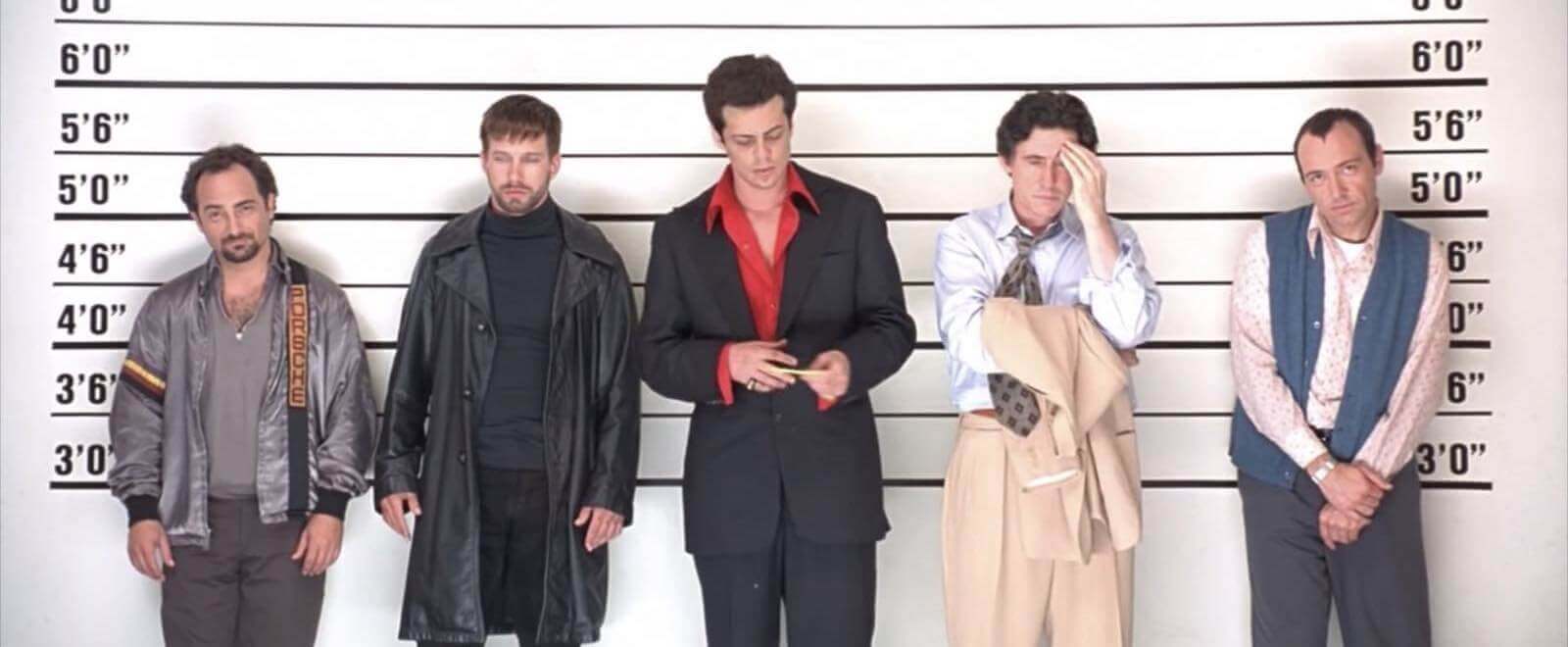
Scene from “The Usual Suspects“
Why Use a Medium Wide Shot?
Filmmakers typically use medium wide shots to draw attention to a scene’s location. A medium wide shot usually puts the focus on the setting first and the characters second. That’s because the setting usually takes up more space in a medium wide shot than the characters.
Filmmakers can also use medium wide shots for a variety of additional reasons, including to:
- Highlight or establish the filming location without disconnecting from the characters or their interactions
- Show the scale of characters in their surroundings
- Emphasize a character’s relationship to their surroundings, such as when a character is filmed in their hometown
- Show a group of two or three characters, often to highlight their relationship
- Help viewers feel like part of the action without being uncomfortably close to it
- Show vital costumes, body language, and facial expressions, especially in dialogue scenes
- Show characters interacting with props or their environment
- Show characters moving or entering or exiting a frame
- Transition smoothly between shot types, such as to shift from a close-up to a wide shot
- Make a scene funnier or more dramatic, such as when action occurs off-screen
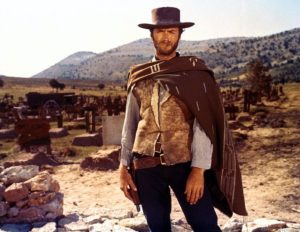
Scene from “The Good, the Bad and the Ugly“
Medium Wide Shots and How They’re Used
Analyzing the way filmmakers use medium wide shots can help you understand the impact they can have on a film. Here are three examples of films that use medium wide shots:
“Zero Dark Thirty”
This still shows the way “Zero Dark Thirty” director Kathryn Bigelow used a medium wide shot to frame Jessica Chastain’s character, Maya. This shot was filmed just after Maya kills the world’s most dangerous terrorist. It displays the emotional aftermath of her actions perfectly. The background, with the American flag flying, represents the love she has for her country, which motivates her actions. Her posture and facial expression show the emotional weight she carries.
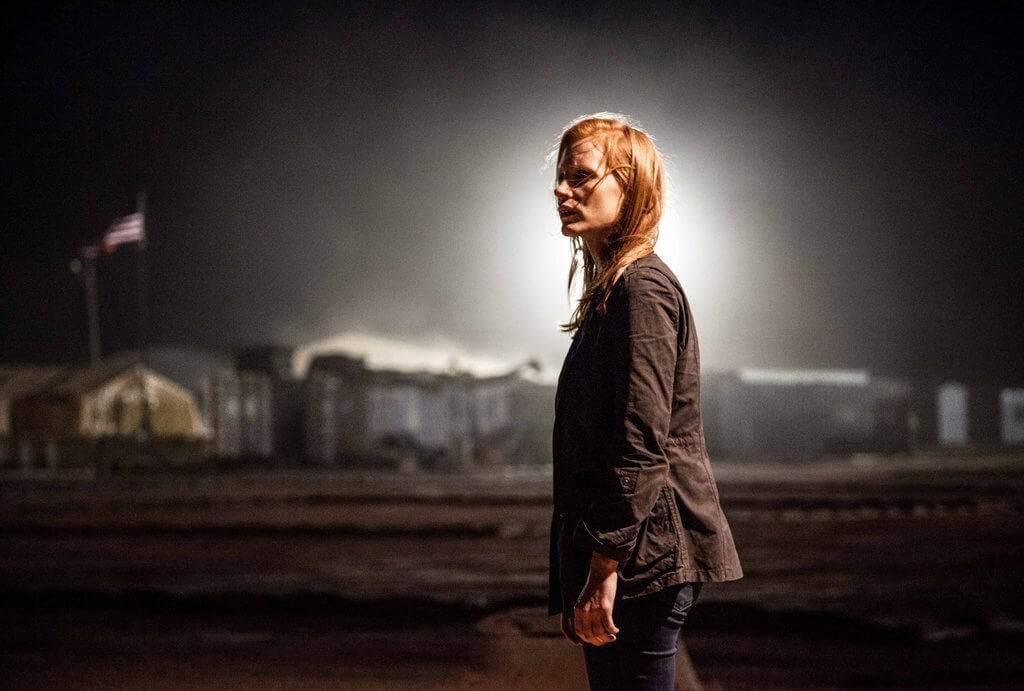
Scene from “Zero Dark Thirty“
“Forrest Gump”
Robert Zemeckis incorporated medium wide shots into this clip from “Forrest Gump.” These shots help capture the budding romance of young Forrest and Jenny. For example, a medium wide shot shows the young friends talking in a tree. This image demonstrates how Forrest and Jenny remove themselves from the rest of the community and the problems they both have.
“Catch Me If You Can“
Stephen Spielberg’s medium wide shot in this video shows the moment where Carl Hanratty and Frank Abagnale Jr. face off. This shot positions both characters as equals in the scene. Carl has stopped chasing Frank, an act which levels their status. The medium wide shot ensures both characters and their interactions are comfortably in the frame.
Other Types of Camera Shots
A medium wide shot is just one of several typically static shots defined by their scale. Other scale-related shots include:
- Close-up shot: Shows a character’s face and shoulders to capture facial expressions

Scene from “The Usual Suspects“
- Choker shot: A variation of the close-up that shows a character’s face from above the eyebrows to below the mouth
- Medium shot: Shows a character from their head to their upper body
- Wide shot: Shows a character from their head to their feet (also called a long shot)
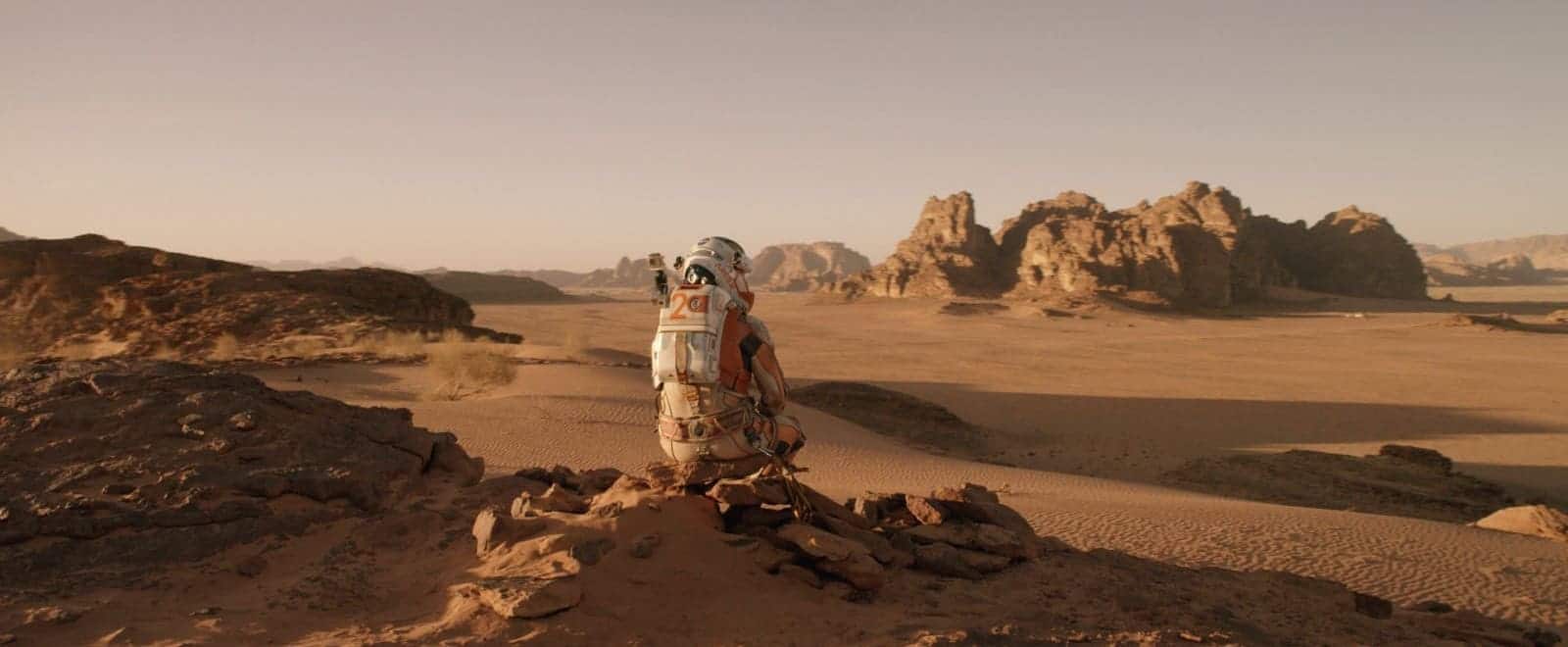
Scene from “The Martian“
- Extreme close-up shot: Zoomed in to show only part of a character’s face or item
- Medium close-up shot: Shows a character from their head to their chest
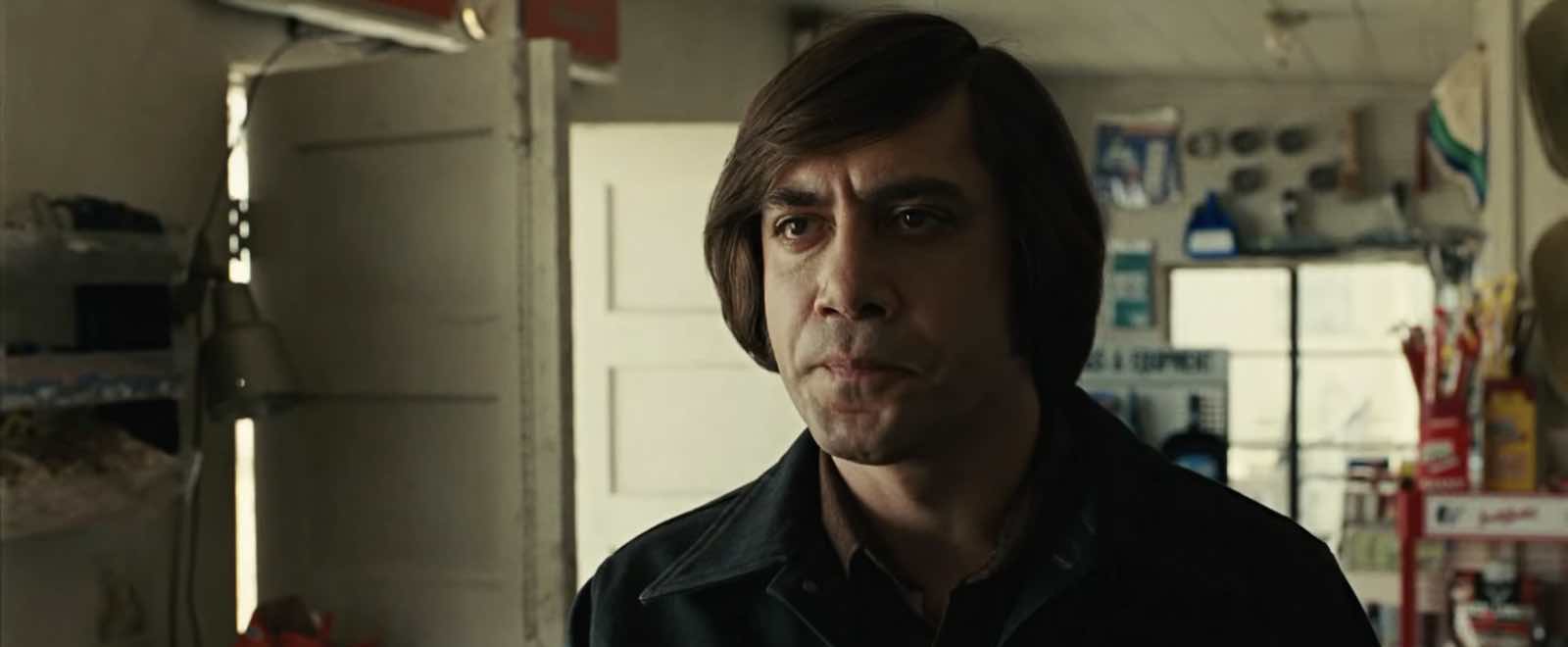
Scene from “No Country for Old Men“
- Extreme wide shot: Zoomed out to show the whole character and their surroundings
- Establishing shot: Shows a location without characters to establish the scene’s location
Static shots can also be defined by the following camera angles:
- The horizontal camera angle (frontal, ¾ front, profile, ¾ rear, rear)
- The vertical camera angle (high angle, eye level, low angle, bird’s-eye view)
Here are four more common static shots defined by their framing:
- Point-of-view shot: Shows vision from a character’s eye level
- Two shot: Shows two characters in frame
- Three shot: Shows three characters in frame
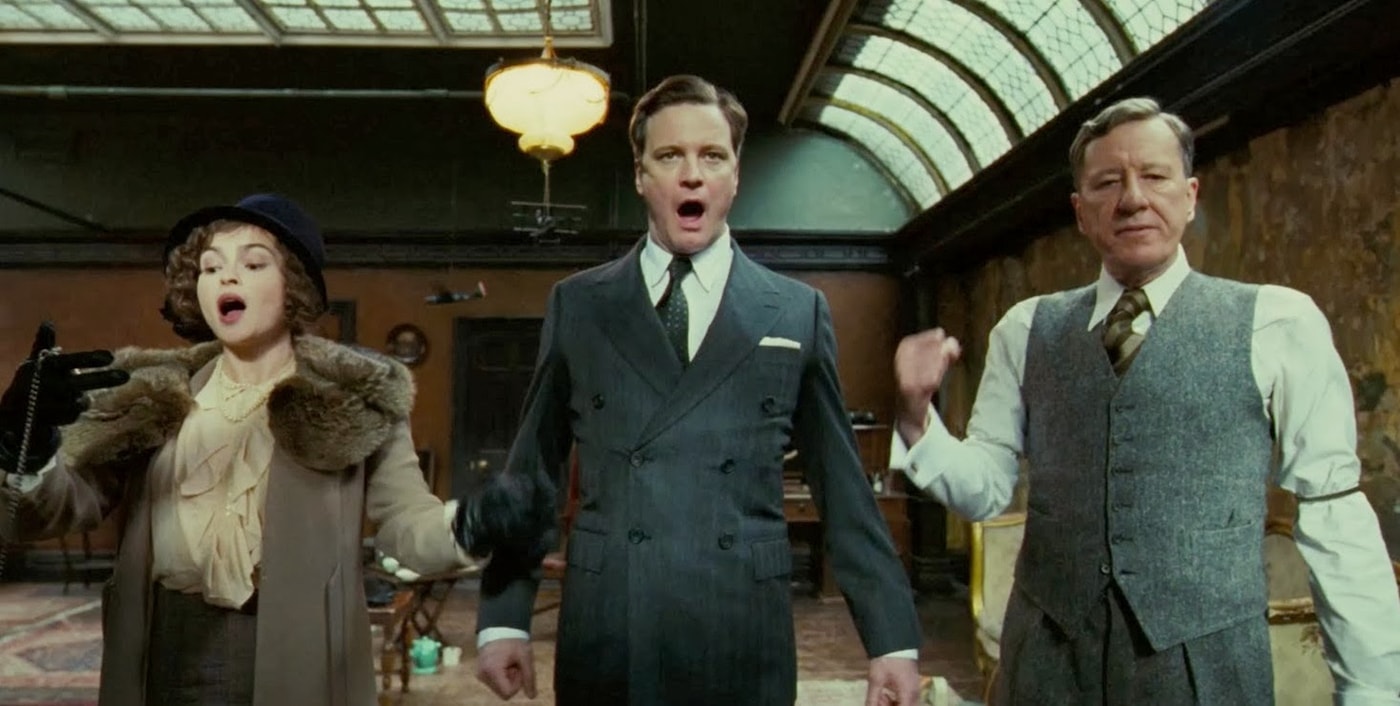
Scene from “The King’s Speech”
- Over-the-shoulder shot: Shows one character filmed over another person’s shoulder, often used for conversations
Note that there can also be some overlap. For example, a medium wide shot can also be a two shot.
While these types of shots are often static, cameras don’t have to stay still. Shots captured by moving cameras are called dynamic shots. Some of the most common dynamic shots include:
- Tilt: Moves up or down without changing location
- Boom: Moves up or down with a location change
- Pan: Moves to the left or right without changing location
- Dolly: Moves to the left or right with a location change, usually to follow a moving subject
- Roll: Rotates so the horizon tilts, often used in flying sequences
- Truck: Moves physically closer to the subject or farther away
- Zoom: Lens adjusts to move the shot closer to the subject or farther away without physically moving the camera
There can also be some overlap between the shots that are usually called static shots and dynamic shots. For example, a medium wide shot that follows two characters as they walk and talk could also be a dolly shot.
Coverage
Medium wide shots are used in conjunction with other shot types to cover scenes. It’s virtually impossible to cover everything in a single scene. Instead, filmmakers choose the kind of coverage that highlights what they want viewers to see. Several factors help them determine the right coverage for each scene, including:
- The scene’s plot points
- What the characters will do
- How the characters feel
For example, a filmmaker might use a medium wide shot to show two characters talking. They might use a close-up shot of one of the character’s faces to highlight how the conversation made them feel, and they might use a wide shot after to show the other character driving away from the scene.
Using a variety of shots, including medium wide shots, to cover a scene also adds visual interest. Viewers become engaged when they can watch a scene unfold from several different angles and perspectives.
How to Elevate the Look of Your Film
After becoming familiar with medium wide shots and the ways they can give your scenes the right coverage, you’ll probably want new ways to elevate the way your films look. One of the simplest ways to enhance your film’s appearance is to ensure you use high-quality products to film it.
A high-definition camera makes your video look crisp and clear, and filters can further enhance your videos. A variable ND filter is a great option because it adjusts to your conditions in real-time. Working with a single variable ND filter is easier, less time consuming, and more affordable than working with several regular ND filters.
Understanding medium wide shots and how to effectively use them can greatly enhance your own videos. You can learn more about the medium wide shot and how you can improve your skills by applying to the Nashville Film Institute here.

